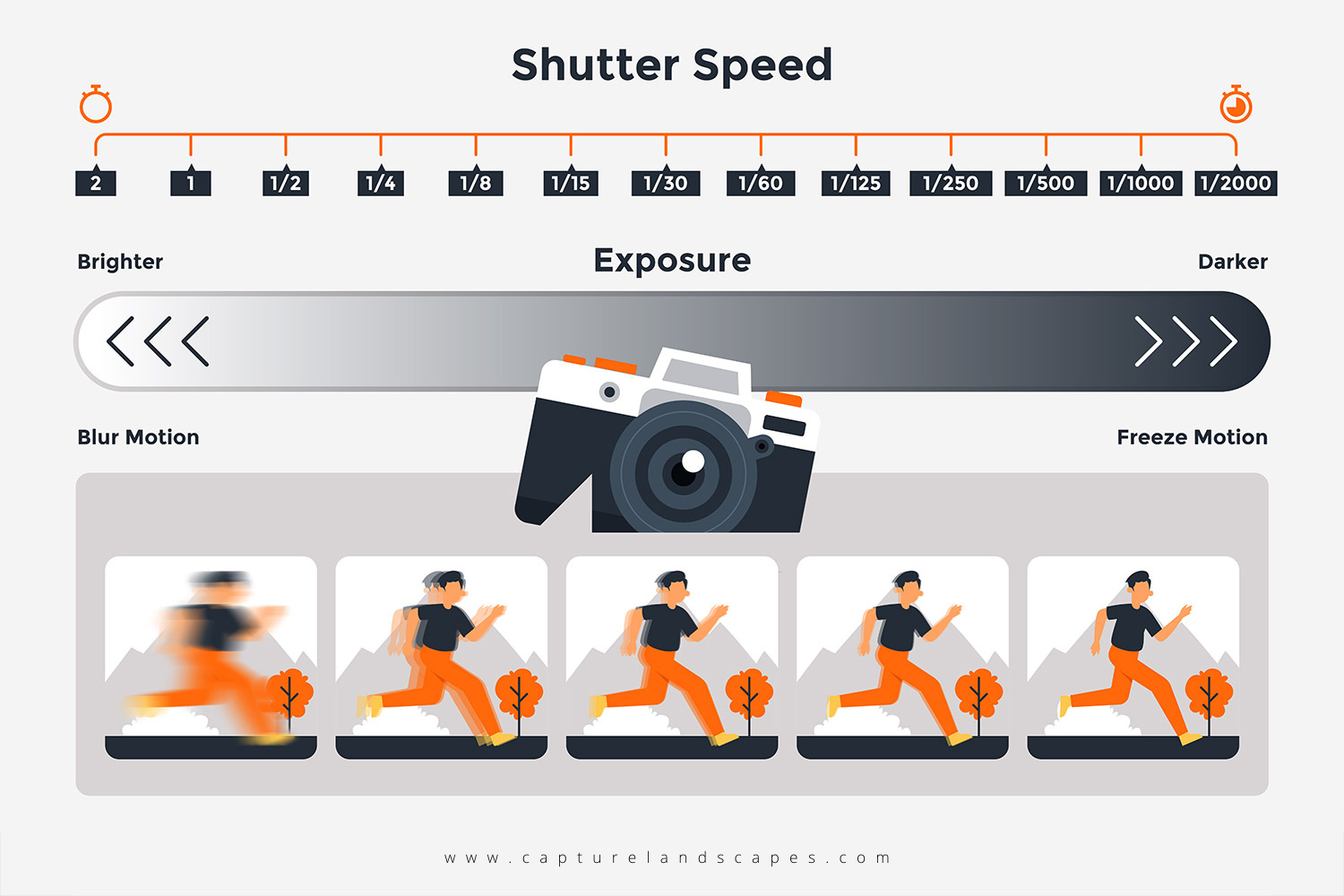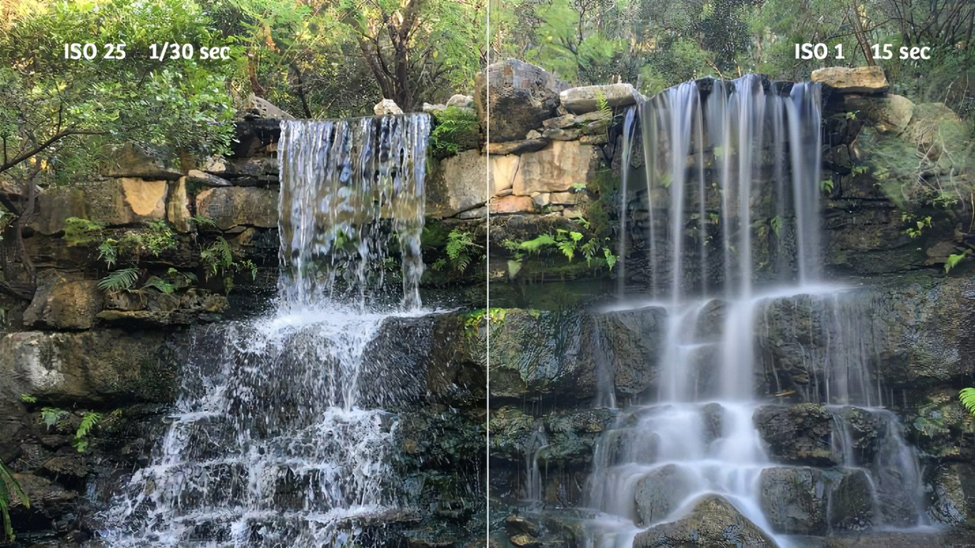Shutter Speed
Shutter Speed
The shutter speed, aka exposure time, is the time that the image sensor is exposed to light when capturing an image. The shutter is a mechanical window inside the camera that opens and closes to allow light into the sensor for a selected amount of time.
This video explains more about different types of camera shutter.
Shutter speed is not necessarily the same as frame rate, which determines how many exposures will be taken per second. For example, it is possible to have a frame rate of 24 frames per second (fps) but have a shutter speed (exposure time) of 1/1000 of a second instead of 1/24 of a second.
A fast shutter speed, such as 1/1000 of a second, will allow light into the sensor extremely briefly. This will work in bright lighting conditions but may not allow enough light to impact the sensor in dimmer light.
A slower shutter speed, such as 1/250 of a second, will allow more light into the sensor, and may work better in lower light conditions. However, a lot can happen over longer periods of time, so faster moving subjects or camera movement may result in a blurry look. This could be an intentional, artistic effect, or could simply ruin your shot or take.
Extremely slow shutter speeds (for example ½ second, 1 second, or more) will allow a LOT of light into the sensor and will almost certainly result in blur effects. However, these shutter speed settings could also be used to capture long exposure photos with their own unique aesthetic appeal.
The Canon EOS 5D Mk IV shutter speed is set using the small dial located on the top right side of the camera. You will notice that this setting has different limits when shooting in video mode vs. still image mode.
When shooting in video mode, you will usually want to leave the shutter speed setting around 30-60. Faster exposure times are possible if you set your ISO and aperture accordingly but will tend to introduce "flicker" into your video.

In the image below, note how a 1/30 second shutter speed produces an image with less blur, while a 15 second exposure time adds considerable blur to the waterfall, resulting in an appealing, soft look.

